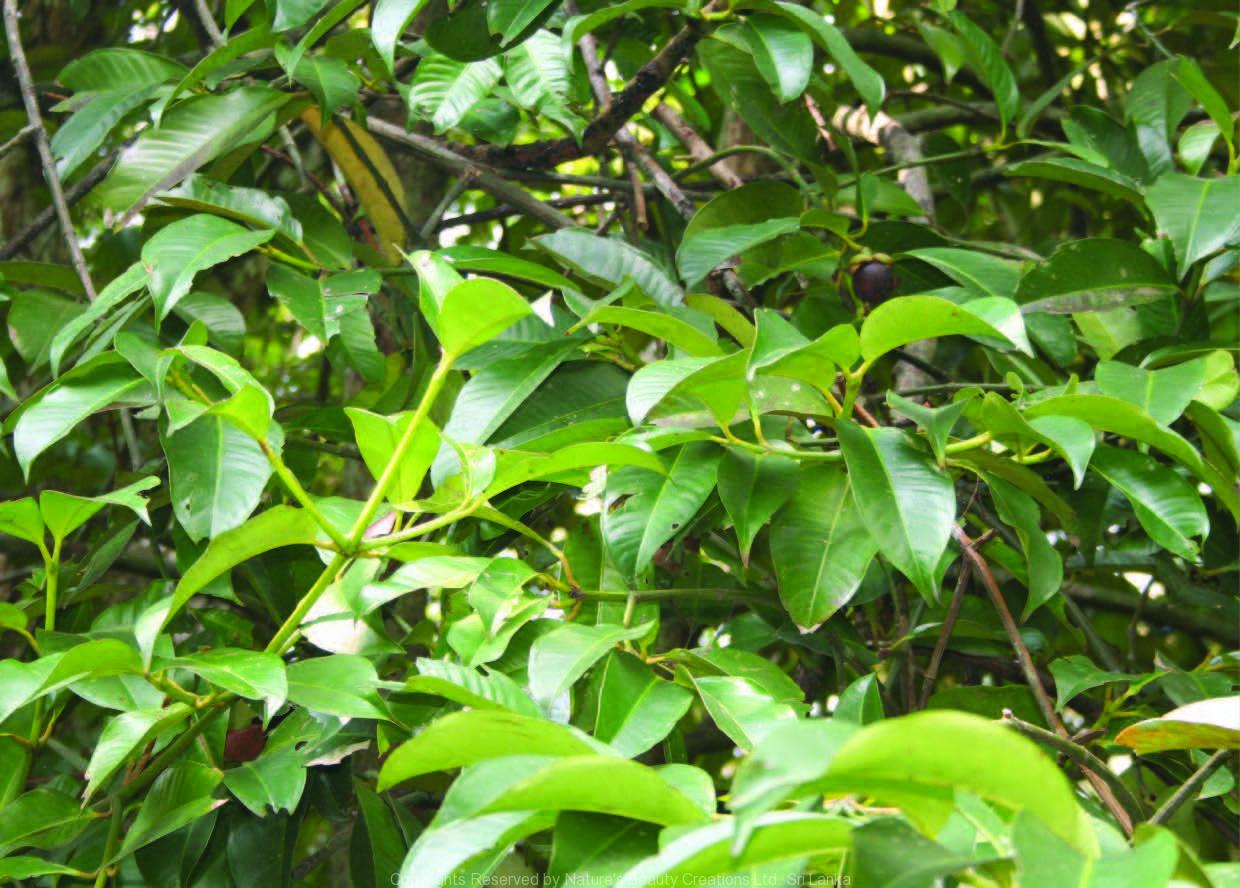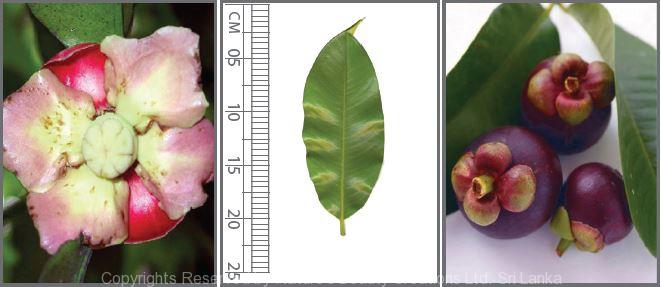

Traditional Knowledge
Useful plant parts :
Root, fruit rind and bark
Uses in traditional medicine :
- Dried fruit rind is boiled in pure water and taken to control diarrhoea and dysentery
- Decoction of the bark is used as a mouthwash to improve gums and teeth
- Root decoction is useful to cure dysmenorrhoea
Scientific Research
Chemical constituents:
Xanthones: cudraxanthone G, garcimangosone B, garcinone D and E, gartanin, α and β mangostins, mangostinone, smeathxanthone A, tovophyllin A, 8-hydroxycudraxanthone G and mangostingone from pericarp; garcinone B from fruit hulls, arils and seeds; isogarcinol from bark
Bioactivity :
Fruit: reduce plasma lipid levels and antioxidative; α-mangostin: antifungal and effective for oral candidiasis; methanol extract of pericarp: antiproliferative, antioxidative, induce apoptosis and cancer chemopreventive; α and β mangostins, and garcinone B: inhibitory effects against Mycobacterium tuberculosis, anti-inflammatory; xanthones: antileptospiral; isogarcinol: immunosuppressant
Clinical:
Herbal mouthwash made of pericarp extract was effective in treating oral malodor; Dietary supplement containing mangosteen enhanced the immune response
Note :
Arils of the ripe fruit are edible
References : Cen, L. et al., (2013), Isogarcinol is a new immunosuppressant, Plos one, 8(6), 1-6. Chen, L. G. et al., (2008), Anti-inflammatory activity of mangostins from Garcinia mangostana, Food and Chemical Toxicology, 46(2), 688-693. Jung, H. A. et al., (2006), Antioxidant Xanthones from the Pericarp of Garcinia mangostana (Mangosteen), Journal of Agricultural and Food chemistry, 54(6), 2077-2082. Kaomongkolgit, R. et al., (2009), Antifungal activity of alpha-mangostin against Candida albicans, Journal of Oral Science, 51(3), 401-406. Leontowicz, H. et al., (2006), Bioactive properties of Snake fruit (Salacca edulis Reinw) and Mangosteen (Garcinia mangostana) and their influence on plasma lipid profile and antioxidant activity in rats fed cholesterol, European Food Research And Technology, 223(5), 697-703. Moongkarndi, P. et al., (2004), Antiproliferation, antioxidation and induction of apoptosis by Garcinia mangostana (mangosteen) on SKBR3 human breast cancer cell line, Journal of Ethnopharmacology, 90(1), 161-166. Orozco, F. G. And Failla, M. L., (2013), Biological activities and bioavailability of mangosteen xanthones: A critical reveiw of the current evidance, Nutrients, 5, 3163-3183. Rassameemasmaung, S. et al., (2007), Effects of herbal mouthwash containing the pericarp extract of Garcinia mangostana L. on halitosis, plaque and papillary bleeding index, Journal of the international academy of periodontology, 9(1), 19-25. Seeom, W. et al., (2013), Antileptospiral activity of xanthones from Garcinia mangostana and synergy of gamma-magostin with penicillin G, BMC complementory and alternative medicine, 13(182). Suksamararn, S. et al., (2013), Anti microbial activity of prenylated xanthones from the fruits of Garcinia mangostana, Chem pharm bull, 51(7), 857-859. Tang, Y. P. et al., (2009), Effect of a Mangosteen Dietary Supplement on Human Immune Function: A Randomized, Double-Blind, Placebo- Controlled Trial, Journal of medicinal food, 12(4), 755-763.
Copyrights Reserved By
Natures Beauty Creations




